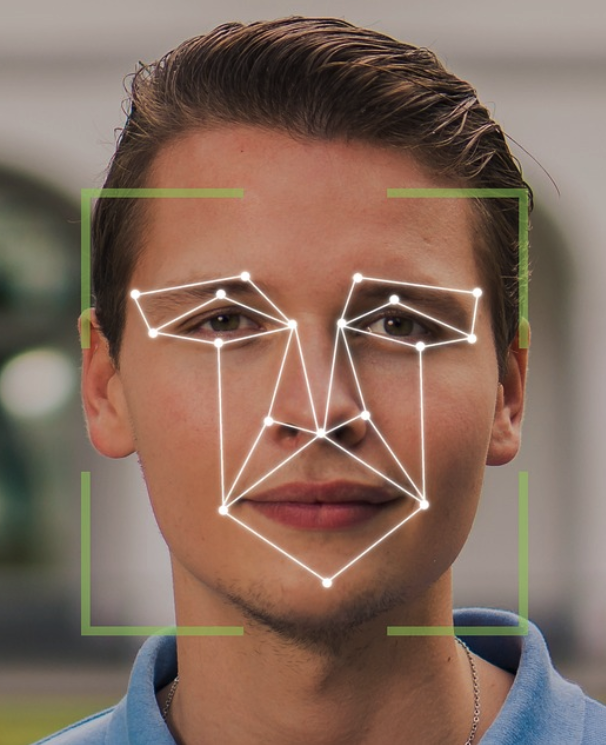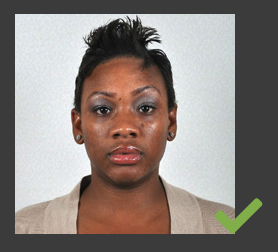When my passport was getting closer to its expiration date a while back, I started gathering everything I’d need to renew it.
I have to tell you – I really, really hate getting my passport photo taken. Besides the fact that I have to have a white or off-white background behind me (I started going gray when I was 17, and was all silver by the time I was 40; on a white background I look like I have no hair at all), I hate that I’m not allowed to smile in the photo.
Ever wonder why that is?
Why can’t you smile on a passport photo?
See, the State Department has specific rules about every aspect of sending them passport photos. The basics include:
- Submit one color photo, taken in the last 6 months.
- Use a clear image of your face. Do not use filters commonly used on social media.
- Have someone else take your photo. No selfies.
- Take off your eyeglasses for your photo.
- Use a white or off-white background without shadows, texture, or lines.
Special things to keep in mind:
— Resolution, print size, quality
But their page also goes into resolution, print size and quality:
- Submit a high resolution photo that is not blurry, grainy, or pixelated.
- The correct size of a passport photo is:
- 2 x 2 inches (51 x 51 mm)
- Head must be between 1 -1 3/8 inches (25 – 35 mm) from the bottom of the chin to the top of the head
- Printed on matte or glossy photo quality paper.
- Do not digitally change the photo.
- You cannot submit a damaged photo with holes, creases, or smudges.
— Proper attire
They also tell you about proper attire for the photo:
- You cannot wear glasses.
- If you cannot remove your glasses for medical reasons, please include a signed note from your doctor with application.
- Taken in clothing normally worn on a daily basis.
- You cannot wear a uniform, clothing that looks like a uniform, or camouflage attire.
- You cannot wear a hat or head covering.
- If you wear a hat or head covering for religious purposes, submit a signed statement that verifies that the hat or head covering in your photo is part of traditional religious attire worn continuously in public.
- If you wear a hat or head covering for medical purposes, submit a signed doctor’s statement verifying the hat or head covering in your photo is used daily for medical purposes.
- Your full face must be visible and your hat or head covering cannot cast shadows or cover up part of your face.
- You cannot wear headphones or wireless hands-free devices.
- You can wear jewelry and keep on your facial piercings as long as they do not hide your face. Permanent tattoos are acceptable for passport purposes as well.
— Pose and expression
And – speaking about smiles – pose and expression:
- Have a neutral facial expression with both eyes open and mouth closed.
- Face the camera directly with full face in view.
- Note to parents of young children: we have sample photos in the Photo Examples section below with tips for submitting a baby’s passport photo. We realize that an infant’s pose and expression are challenging to maintain for a photo.
Here are the suggestions the State Dep’t makes:
But why can’t we smile?
It all has to do with international security measures.
Starting in the early aughts, countries started using biometric passports (the ones with the chips in them) to increase security. Along with that, border patrols’ software began including facial recognition, again, as an added security measure. So ideally, a passenger’s face can be scanned electronically and then be compared against a database of legally obtained passport photos.
Biometric facial scans usually identify 14 to 20 points on your face (generally the edges of your nose, eyes, lips, etc.) and takes certain measurements into account (i.e. the distance between your eyes, how far between the tip of your nose and the edge of your lips, etc.).

If you smile, the position of your face shifts those points and that can cause the software to have more difficulty in determining that your face and the face shown on your passport are that of the same person.
It’s not banned
By the way, the State Dep’t hasn’t actually BANNED smiling in a passport photo. But if you feel you must, make sure your eyes stay open and your mouth stays closed (don’t show your teeth, if at all possible).
Other countries, by the way, have much more strict rules. For example, the U.K., Canada, India, France, South Korea and Australia all require applicants to maintain a completely neutral expression, without a hint of a smile.
What about babies and small children?
Fortunately, the governments of the world understand that just because you tell a baby or young child to “not smile,” it might not work. They allow more wiggle room for passport photos for the very young. Here are some of the rules and the things that are OK:
- The baby/child’s full face must be shown
- No other person in the photo
- They have to be facing front
- No shadows over their face
- The background needs to be white or off white
- An infant’s eyes can be closed or only partially open (all other children must have their eyes open)
- Babies and young children can be smiling if you can’t make them “not smile.” However exaggerated faces (i.e. sticking their tongue out) are not acceptable.
But for adults, the biometric systems around the world work best if you maintain a placid, casual, neutral look, without smiling or frowning, in your passport photo.
Want to comment on this post? Great! Read this first to help ensure it gets approved.
Want to sponsor a post, write something for Your Mileage May Vary, or put ads on our site? Click here for more info.
Like this post? Please share it! We have plenty more just like it and would love it if you decided to hang around and sign up to get emailed notifications of when we post.
Whether you’ve read our articles before or this is the first time you’re stopping by, we’re really glad you’re here and hope you come back to visit again!
This post first appeared on Your Mileage May Vary



